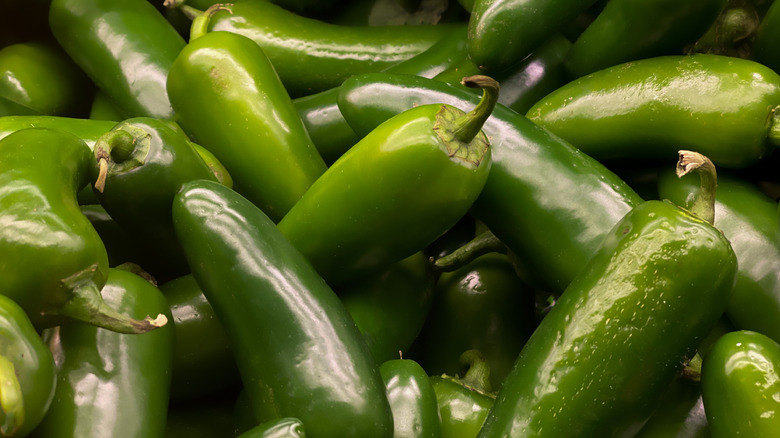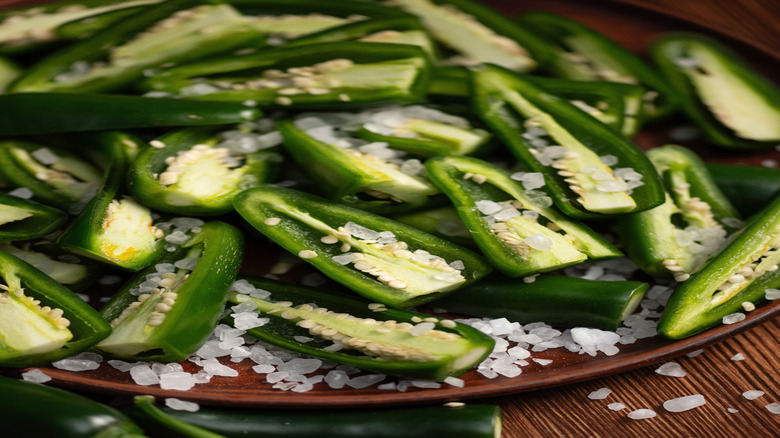The Easiest Way To Tell If Your Jalapeños Pack A Hefty Punch Of Heat
As spicy flavors take over grocery store shelves and fast food chains nationwide, more home cooks are incorporating hot peppers. However, it's understandable if you don't want that heat sensation to be overwhelming. Shoppers can determine on sight whether that jalapeño in the produce section is going to spare their palate or completely blow it out. Just look for telltale lines, evocative of stretch marks, spread lengthwise down the skin of the chosen pepper. These lines are usually white in color but can also be brown.
Stretch marks appear on a jalapeño pepper as it ages. Known as pepper corking, it's a sign that the pepper is growing rapidly; the jalapeño's skin splits to accommodate the growing inner fruit. The more a jalapeño is watered and kept in good sunlight, the more likely it is to grow at a rate that encourages pepper corking. Because a jalapeño with corking is a more mature pepper, it's had more of an opportunity to build up capsaicin, a naturally occurring molecular compound that produces heat in any spicy pepper. As a jalapeño ages and ripens, its color will change from green to red. A red jalapeño will also have a sweeter taste than its not-as-ripe green counterparts.
Bear in mind, there is no scientific basis that confirms a jalapeño with stretch marks is definitely spicier than one without. That said, this method is still the best visual indicator of a pepper that could be too hot for your personal tastes.
How to reduce the heat of a spicy jalapeño
So, you're getting ready to make Taki stuffed jalapeños for game day and you realize the batch of peppers purchased have the telltale lines of pepper corking. Don't panic! There are easy ways to cut down the heat level of the pepper — and the above recipe provides good examples of them.
Most of the heat-bringing capsaicin resides within the guts of the jalapeño, the white inner fleshy part known as the pith or the veins. Cut the pepper lengthwise to expose the pith. When a jalapeño is cut open, it emits capsaicin all over the veins and accompanying pepper seeds. (This action is the pepper's natural defense mechanism against predatory bugs and fungi.) To quickly remove the biggest source of a jalapeño's heat, simply cut the seeds and veins out of the pepper's innards. Be sure to wear protective gloves to avoid getting the spice on your skin, which can make your hands sting.
Another simple way to deflect a spicy pepper's punch is to pair it with something that is dairy-based, like ranch dressing or cream cheese. As capsaicin is fat-soluble, this means a food containing casein, or fatty milk protein, will bond with the capsaicin and diminish it.
And if you intended to pickle the jalapeños for later use, but didn't want them to yield a spicy bite, you're in luck. Jalapeños lose heat upon pickling, and the vinegary brine makes them tangier. Over time in the refrigerator, the peppers will become even sweeter and milder.

